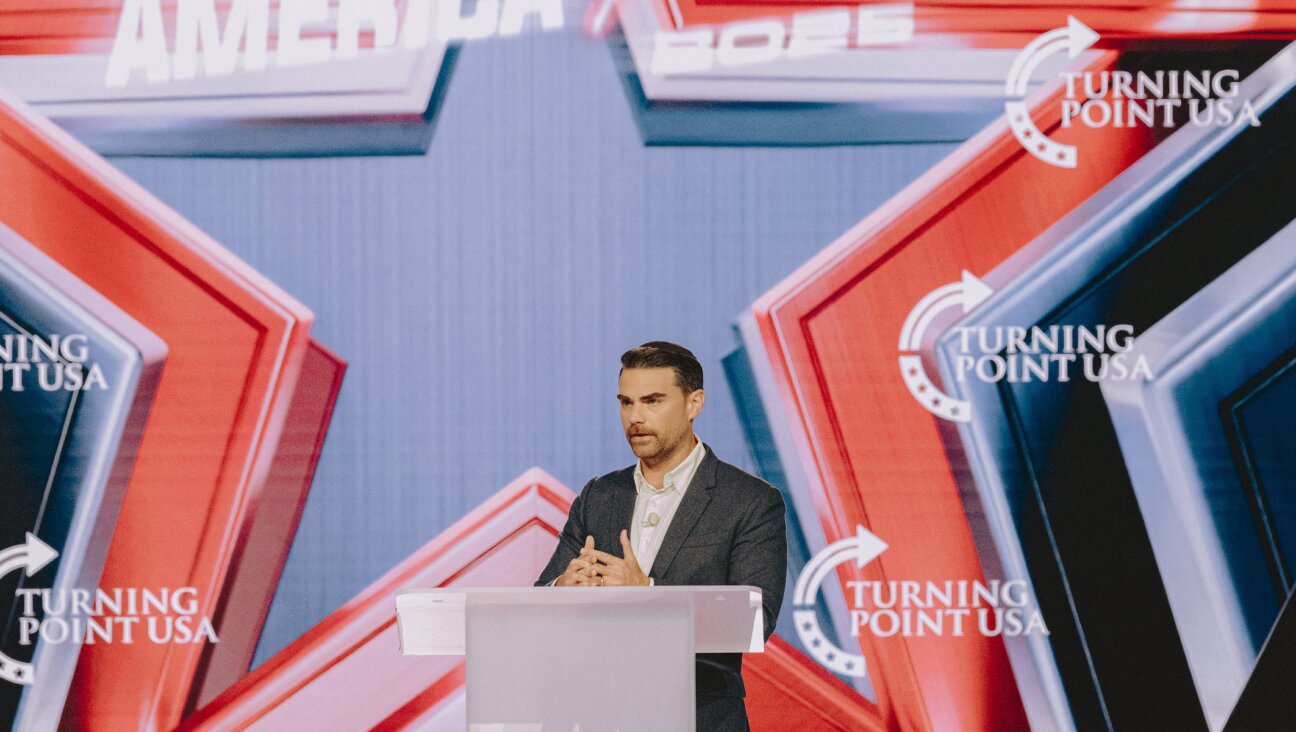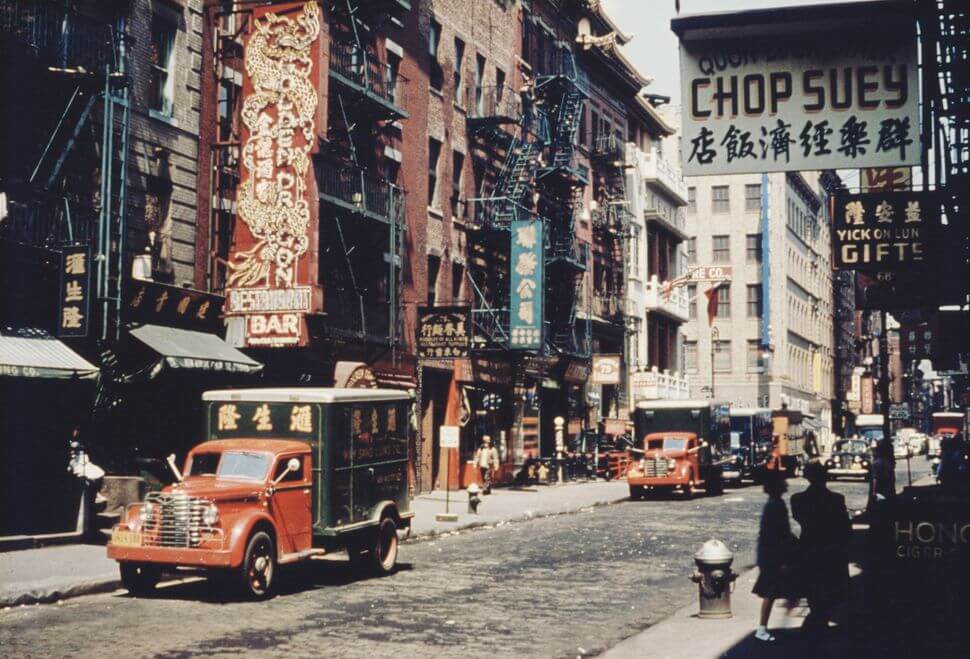Climbing the Family Tree
During a recent bout of my usual frantic procrastination-induced Web surfing, I stumbled onto something that made me stop clicking: There were my husband’s eyes, staring out at me… from a photo taken in 1870. It seemed that a distant cousin of Jonathan’s in Israel, someone we’d never heard of, had put together a huge Steuer family tree, including photos. I was hypnotized by the same heavy-lidded, almond-shaped, soulful-looking eyes staring back from dozens of photos spanning over 100 years. And as I started reading all those bios of long-dead people, my brain nearly exploded.
I discovered that Jonathan was related to Max D. Steuer, the criminal lawyer who defended the factory owners in the 1911 fire at the Triangle Shirtwaist Factory (who got off, you may recall).
Steuer went on to become a major figure in New York legal circles; he was the subject of two New Yorker profiles and was repeatedly described by Time magazine as “slick,” “little” and “hawk-faced.” (They might as well have just called him a dirty little Jew.) But Max was far from the only fascinating character I found on this huge page. There was a father-son con-man duo that was jailed in Florida for bogus land-speculation deals. There was a professor at the London School of Economics who once held three world records in hot-air ballooning (altitude, distance and duration of flight) and had written the psychedelic 1968 art film “The Committee,” with music by Pink Floyd, recently released on DVD. (I am enticed by the customer review on Amazon that enthusiastically attests, “The decapitation scene is quite shocking even by today’s standards, especially when the head is sewn back on!”) There was also a writer of early TV dramas (including an episode of General Electric Theater in which a very young James Dean played a hepcat hoodlum) who later abandoned his family, moved to a mountaintop in the Himalayas, became a monk and has never been heard from again. There was a cigar maker who lived a block and a half from us… in 1880.
This vast rush of data was spiked with fascinating little biographical nuggets. And I quickly found myself poking around the Internet, looking for more. (Much of the information in the final two paragraphs I dug up myself, triggered by a terse phrase on Cousin Marlena’s page.) And suddenly I viscerally appreciated genealogy, a pastime I’d always found approximately as interesting as watching paint dry.
My friend Molly Ker Hawn has found this stuff bewitching for years. But whenever she talked about family history or the Battle of Brooklyn or her Daughters of the American Revolution chapter meetings, I affixed a polite expression of engagement to my face and went to the happy place in my head. La, la, la, I wonder if we’re out of yogurt? Now I am ashamed. I get it. Forgive me, Molly.
Let her explain it to you herself. “Genealogy is a big puzzle, and I like puzzles,” she said. “And I’m obsessive compulsive and don’t like to leave any puzzle unfinished, and this is a puzzle I’ll never finish. I lie awake saying, ‘As long as I know this one person’s parents, I can relax!’ But you can’t, because then you want to know his parents.” (Indeed, as I write this, Cousin Marlena’s site is down for an upgrade. I wrote to her to ask where it was, and she wrote back that she was working on it… and could I please send her some more family photos.)
Molly points out that personal history is a fascinating window into a much wider world. “In school, history is dates and wars. But real history is people.” (Indeed, I will be forever grateful to Mrs. Tempkin, my high school history teacher, for urging me to read Frederick Lewis Allen’s “Only Yesterday: An Informal History of the 1920’s,” which introduced me to the whole idea of social history, of the notion that you could learn about a place and time through music, movies, fashion and celebrities. See, I knew there was a reason I read all those blogs.)
And of course, genealogy is a way to meet people, both living and immortalized in historic documents, whom you never would have met otherwise. Molly is an only child who grew up far from her extended family. “I never knew anyone,” she said. And then she started digging. When she first excitedly informed her father that there was a German-speaking branch of the family, he didn’t believe her. Doing genealogy research also gave her a sense that her long-ago family might have been a lot like her. As a bookish little girl, she was thrilled to discover ancestors who found as much solace in books as she did — people like John Scouller, who was born in 1733 and fought in the Pennsylvania militia during the Revolutionary War. Molly uncovered his 1805 will, which states: “I give and bequeath unto my son… all books of Law, Arithmitick, Mathamaticks, Philosophy, Astronomy, the Big Bible and quotations thereon and all Books he has bought himself… and all the rest of my Books not bequeathed I allow to be equally divided between my children.” In an era when not a lot of people had books, it was clear that he cherished his and cared a lot about what happened to them after he was gone.
A 2005 poll conducted by national, research and strategic consulting firm Market Strategies, Inc., and by MyFamily.com, Inc., a family history Web site, found that 73% of Americans were interested in discovering their family histories. A similar poll, conducted by a research company, Maritz, in 2000, found that 60% of Americans were interested. An American Demographics magazine article from 1995 found that 113 million American, or 40% of the population, were at least somewhat interested in family history. However reliable these figures are, I don’t think anyone could deny that more and more people seem interested in genealogy, and I don’t think anyone could deny that the rise in interest corresponds to the rise in Internet access and Web tools. Today more of us have high-speed access; there are vast online genealogy databases (and incidentally, the Mormons, who have one of the biggest databases, have promised yet again that they’ll stop baptizing dead Jews, so we’ve got that going for us!) and there are superb family-tree-making software packages. You no longer have to trek to cemeteries and city halls and libraries or write to county clerks all over the world.
But did improved tools beget greater interest in genealogy, or did greater interest in genealogy spark the creation of improved tools? It’s a two-way street, says Jana Branch, vice president and executive editor at Iconoculture, a consumer trend research firm (which, in full disclosure, also employs my husband). “After 9/11, people pulled into turtle shells around family and all the values connected to family and relationships,” Branch said. “As a society, we’re more mobile and multicultural and our identities are more mixed, but that also produces a reaction, a desire to know: What is true and authentic about me? What’s my uniqueness? These questions drive some people to look back into their own particular heritage.” Such yearnings are fueling the huge rise in heritage tours such as ShtetlSchleppers, which takes American Jews to Eastern Europe to trace their roots. Run by the Jewish genealogy site JewishGen, ShtetlSchleppers pairs guided group tours with individualized trips to cemeteries, historic sites, synagogues and record halls to help visitors work on their family histories.
“The whole question of ‘Who are my ancestors?’ answers a deep human need to place ourselves in history somehow,” Branch said. Once upon a time, genealogy was for royalty (and its American equivalent, the Mayflower WASP; and its Jewish equivalent, the person descended from a really awesome long-dead rabbi — you know, like Gwyneth Paltrow). But better tools now allow the rest of us to trace our roots. Where genealogy once proved that you were the elect, now you can ground yourself in the grand sweep of human destiny even by tracing yourself back to a babushka-wearing peasant.
And many of us are now far-removed enough from the shtetl not to be embarrassed of our origins. Our immigrant great-grandparents had their ethnic clubs and festivals, but their children desperately wanted to assimilate. (Molly recalls asking her great-aunt, Zizi Carina, why she never visited Italy. “She’d say, ‘Why I wanna go there? Everybody poor!’”) But Gen X and Gen Y are multitaskers and multi-identity-wearers. They’re the ones buying the Heeb tees and learning Yiddish, a language their parents never spoke.
And our culture seems more willing to let us contradict ourselves and contain multitudes, to sling a little Whitman. “Our society encourages fragmentation and speed and experimenting with identity,” Branch said, “but it also produces an opposite reaction of wanting to get back to some essential knowledge about yourself.” And hey, I’m glad to have a new source of procrastination justification.
Write to Marjorie at [email protected].














